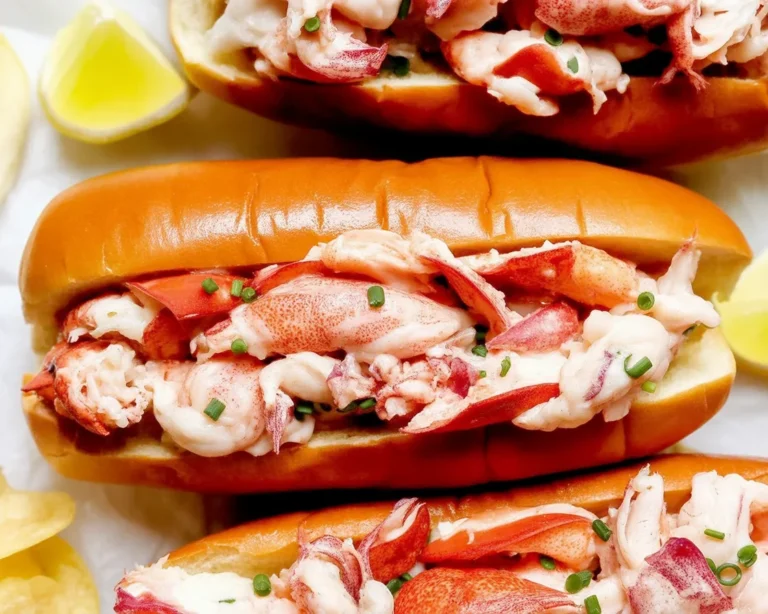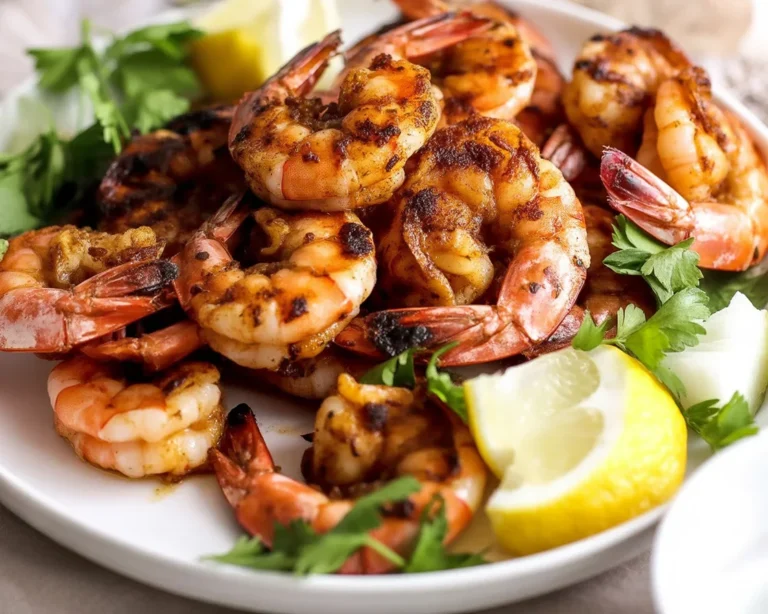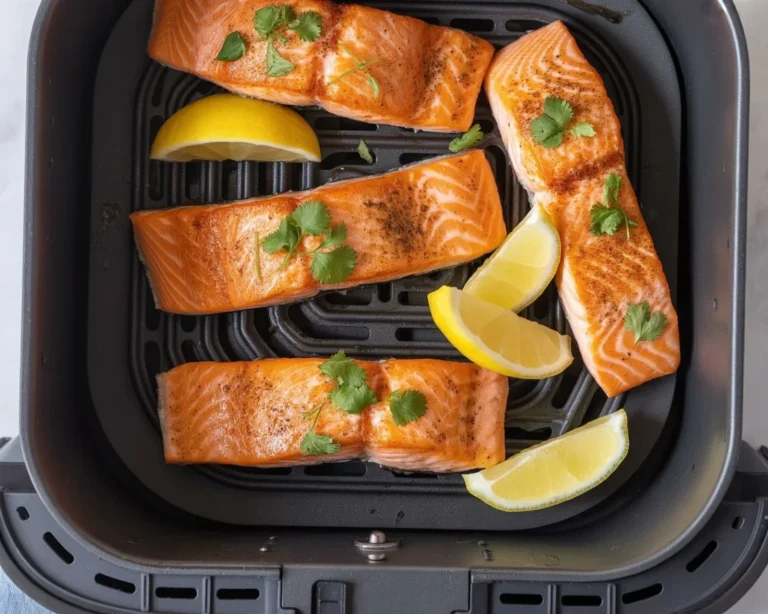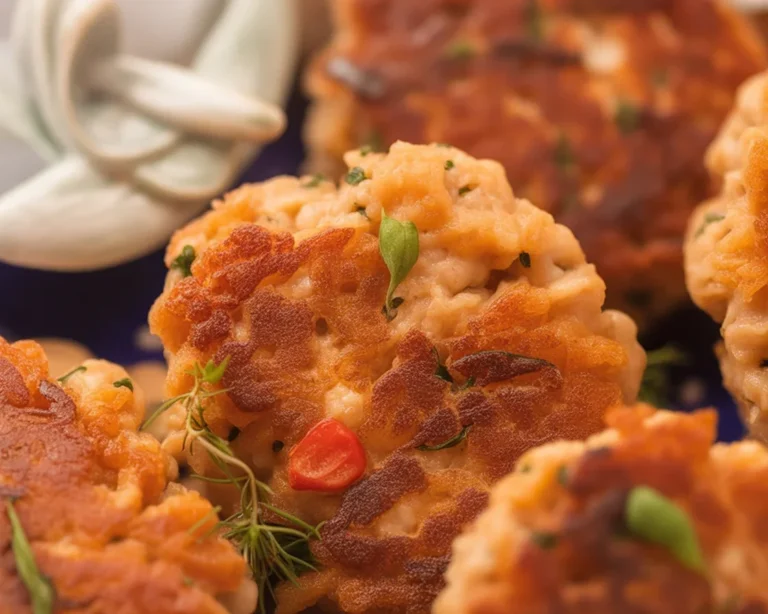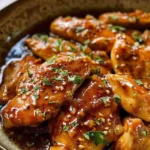Imagine the smell of smoked salmon filling your kitchen. It’s like being at the beach, where the sea meets the air. As you start making your smoked salmon brine, think of the good times with loved ones over food. You can enjoy that amazing taste right at home.
Making smoked salmon brine is both an art and science. With the right ingredients and methods, you can make a dish that’s unforgettable. This guide will help you learn all about making smoked salmon brine. It encourages you to be creative in the kitchen.

Table of Contents
Key Takeaways
- Brining is essential for improving flavor and texture in smoked salmon.
- The right smoked salmon brine recipe ensures moist, delicious results.
- Key ingredients include salt, sugar, and flavor enhancers like soy sauce.
- Understanding brining times for different salmon cuts is key.
- Homemade smoked salmon offers customization and cost-effectiveness.
Understanding the Importance of Brining Salmon
Brining is key when making smoked salmon. It does many things to make the dish better. You might ask why brining is so important for great smoked salmon. The answer is simple: it makes the flavor and texture much better.
Why Brining is Essential for Smoked Salmon
The brine for smoked salmon changes the flavor. It adds salt and other ingredients to the fish. This makes the fish taste more vibrant and fresh.
Without brining, the salmon might dry out during smoking. This would make it taste bad.
Effects of Brining on Flavor and Texture
Brining changes how the salmon feels and tastes. It makes the fish hold onto moisture better. This makes the salmon firmer and more enjoyable to eat.
As the brine goes into the fish, it brings out the salmon’s rich taste. This makes the dish incredibly tasty.
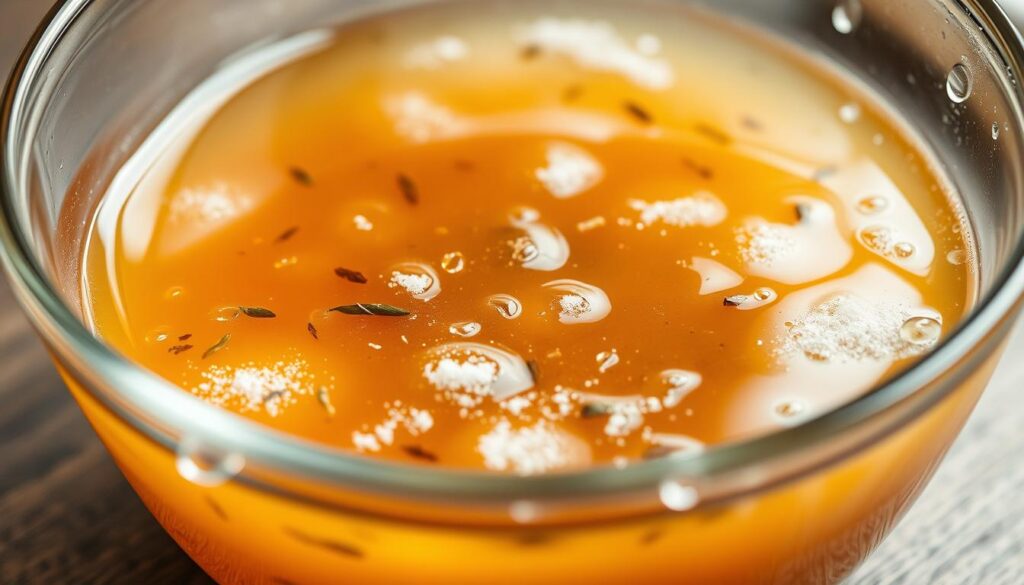
Key Ingredients for the Perfect Smoked Salmon Brine
Making a great smoked salmon brine starts with knowing the key ingredients. Salt, sugar, and sometimes soy sauce and wine are essential. Each one helps bring out the best flavor in your salmon.
Salt: The Essential Element
Salt is a must-have in any smoked salmon brine. It does two important things. It pulls moisture out of the fish, helping it last longer. It also adds flavor, making each bite taste rich and savory.
Using a high-quality coarse salt like kosher salt is best. It spreads evenly in your brine. The right amount of salt can make your salmon taste better and feel softer.
The Role of Sugar in Brining
Sugar is key in balancing the brine’s saltiness. It adds a touch of sweetness that balances out the salt. This makes the flavor more complete.
Brown sugar or maple sugar are great choices. They add sweetness and depth, bringing out the salmon’s natural flavors.
Additional Flavor Enhancers: Soy Sauce and Wine
For a more complex flavor, try adding soy sauce and dry white wine to your brine. Soy sauce adds a rich umami taste. Wine adds acidity and more flavors, making the salmon taste amazing.
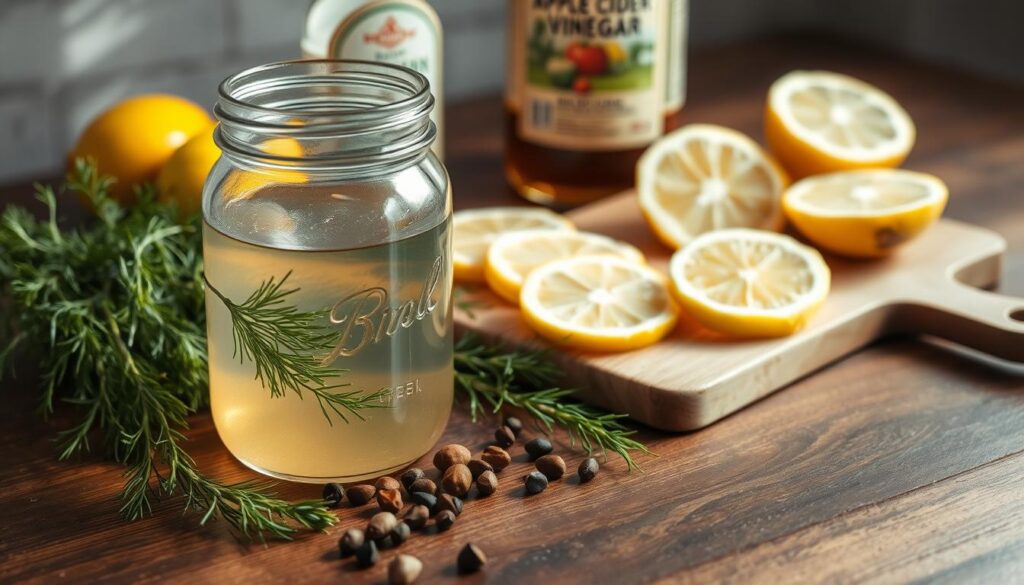
How to Make the Best Smoked Salmon Brine
Making the perfect smoked salmon brine is a fun task. It’s all about following the right steps to get your salmon to taste great and stay moist. Start with a basic mix of key ingredients. Remember, some mistakes can mess up your brine.
Step-by-Step Brine Preparation
First, gather these ingredients for your brine:
- 1 cup of kosher salt
- 1 cup of sugar
- 1/2 cup of soy sauce
- 1 cup of water
- 1/2 cup of white wine
- 1 teaspoon of onion powder
- 1 teaspoon of garlic powder
- Optional: A dash of hot sauce for heat
In a bowl, mix all the ingredients until they dissolve. This brine will boost the salmon’s flavor.
Common Pitfalls to Avoid When Making Brine
There are a few mistakes to watch out for:
- Skipping ingredient measurements: Getting the right amounts is important for taste.
- Underestimating steeping time: The brine needs enough time to soak the fish.
- Over-brining: Don’t leave the salmon in too long, or it will be too salty.
Follow these steps and avoid common mistakes for a tasty smoked salmon. This brine recipe will make your salmon taste amazing.
Brining Times: Finding the Sweet Spot
Finding the right brining times for salmon is key to perfect flavor and texture. Different salmon cuts need different brining times to soak up salt and seasonings well. Knowing these times can make your smoked salmon much better.
How Long to Brine Different Salmon Cuts
The salmon cut affects how long it should brine. Here’s a quick guide:
| Salmon Cut | Recommended Brining Time |
|---|---|
| Thin Fillets | 4 hours |
| Medium Cuts | 6 hours |
| Thick Fillets (e.g., King Salmon) | 8 hours |
These times are just a starting point. Adjust them based on your taste and brining conditions.
Signs Your Salmon is Ready for Smoking
Knowing when your salmon is ready for smoking is vital. Check if it feels firm to the touch. The brine should be evenly spread on the surface. If it’s too soft, it’s brined too long and will be too salty.
If the salmon looks dull or lacks shine, it might need more brining time. This will help it taste fuller.
How to Prepare Salmon After Brining
After brining, it’s key to prepare the salmon right for great taste. First, rinse the salmon to get rid of extra salt and sugar. Then, dry it well. This step is important for the next step: making a pellicle. A pellicle helps the salmon soak up more flavor during smoking.
Rinsing and Patting the Salmon Dry
Begin by rinsing the salmon under cold water. This cuts down the salty taste from the brine, making it taste better. After rinsing, dry the salmon with paper towels. It’s important to dry it well to avoid too much moisture during smoking.
The Importance of Forming a Pellicle
Making a pellicle is a must for smoking. Place the dry salmon on a cooling rack in a cool, well-ventilated area. Let it sit for a few hours to form a shiny layer. This layer is key for smoke to stick to the salmon, improving the flavor.
Smoking Techniques for Perfectly Smoked Salmon
Mastering the art of smoking salmon involves a few key elements. These include choosing the right wood and controlling the temperature. The right techniques can make your smoked salmon truly flavorful.
Choosing the Right Wood for Smoking
The wood you choose greatly affects the salmon’s flavor. Here are some popular options:
- Hickory: Gives a strong, intense smoke flavor.
- Maple: Offers a milder, sweeter smoke that complements the fish well.
- Fruitwoods (like apple and cherry): Add a subtle, fruity nuance, improving the flavor without overpowering the salmon.
Try different woods to find the one that suits your taste best. Each wood adds its own unique flavor to your dish.
Temperature Control During Smoking
Keeping the temperature right is key when smoking salmon. Aim for 225°F to 275°F to ensure even cooking and flavor development. If it’s too hot, the salmon can become dry and unappealing.
- Use a pan of water in your smoker to help control the heat.
- Check the salmon’s internal temperature with a reliable thermometer.
By choosing the right wood and controlling the temperature, you’ll create a dish with irresistible flavors.
Alternative Methods for Brining Salmon
Brining salmon can make a big difference in its taste and texture. You can choose from dry brining and wet brining. Each method lets you customize your smoked salmon to your liking.
Dry Brining vs. Wet Brining
Dry brining uses salt and sugar right on the salmon. It pulls out moisture and boosts flavor. This way, the salmon’s natural texture stays intact.
Wet brining, on the other hand, soaks the salmon in saltwater. It spreads flavors evenly. Both methods can make your salmon taste great, depending on your time and goals.
Comparison of Brine Recipes for Different Flavors
Trying out different brine recipes can be fun. You might like a sweet brine with brown sugar and orange zest. Or a savory one with soy sauce and herbs.
Each mix brings out something special in the salmon. For tips on making the perfect brine, check out this guide on salmon brining.
Serving Suggestions for Smoked Salmon
Smoked salmon adds a rich flavor to many dishes. It’s perfect for any occasion. You can make old favorites better or try new things with it.
Pairing Smoked Salmon with Side Dishes
Smoked salmon goes great with:
- Bagels with cream cheese and capers
- Fresh salads with vinaigrette
- Rice cakes or crackers for a quick snack
- Roasted veggies for a tasty mix
Creative Ways to Use Smoked Salmon in Meals
Try these new ideas with smoked salmon:
- Add it to creamy pasta dishes
- Make a savory omelet with herbs and salmon
- Top a gourmet pizza with salmon, cream cheese, and dill
- Stuff puff pastry with spinach, cheese, and salmon for a fancy appetizer
Benefits of Making Your Own Smoked Salmon
Making your own smoked salmon offers many benefits beyond taste. It’s a rewarding process that saves money and lets you tailor flavors to your liking. You can enjoy the savings and the fun of creating something special.
Cost-Effectiveness of Homemade Smoked Salmon
One big reason to make your own smoked salmon is the cost savings. Store-bought salmon can be pricey, even for high-quality options. Making it at home cuts down on costs and lets you use fresher fish. Plus, buying salmon from local markets can save you even more money.
The Flavorful Advantage of Customizing Your Brine
Customizing flavors is another major perk. When you make your own brine, you can adjust ingredients to match your taste. Want it sweeter or savory? You decide. This means every batch can be a new and exciting taste experience.
| Aspect | Homemade Smoked Salmon | Store-Bought Smoked Salmon |
|---|---|---|
| Cost | Lower, due to direct sourcing and DIY process | Higher, premium pricing for quality |
| Flavor Customization | Full control over brine ingredients and flavors | Limited to available flavor profiles |
| Freshness | Made on-demand, ensuring maximum freshness | May have preservatives for shelf life |
| Personal Satisfaction | High, from personal culinary achievement | Low, as it’s a purchased product |
Storing and Preserving Smoked Salmon
Learning how to store smoked salmon right keeps its taste fresh for longer. Storing it properly is key to keeping it fresh and tasty. Use an airtight container or wrap it tightly in plastic wrap to prevent moisture and odors. This way, your smoked salmon can stay good for 7 to 10 days in the fridge.
Best Practices for Refrigeration
When you put your smoked salmon in the fridge, place it in the coldest spot, like the back. Covering all surfaces prevents drying out and spoilage. Always check for any signs of spoilage before eating. Keeping the fridge at or below 40°F (4°C) helps keep the salmon fresh.
How to Vacuum Seal for Longer Shelf Life
Vacuum sealing is great for keeping smoked salmon fresh longer. It removes air, slowing down spoilage. Vacuum-sealed smoked salmon can last up to three weeks in the fridge. If you want to keep it even longer, freezing is a good choice. Use quality freezer bags or foil to keep its taste and texture.
Tips for Perfecting Your Skill in Smoking Salmon
Smoking salmon is a chance to get creative and precise in the kitchen. You can try new flavors by experimenting with different brines and woods. This leads to exciting dishes. Remember, smoking tips are key to improving your dish.
Experimenting with Flavor Combinations
Start by mixing different brine ingredients. Try spices, herbs, fruit juices, or different salts. Here are some ideas to enhance your salmon:
- Maple syrup for a touch of sweetness
- Citrus zest for brightness
- Herbs like dill or thyme for a fresh note
- A splash of bourbon for depth
Keep track of what works and what doesn’t. This helps you improve with each try.
Common Mistakes and How to Avoid Them
Be careful not to make common mistakes when smoking salmon. Wrong brining times can ruin flavor and texture. Too much brine makes it too salty, too little doesn’t penetrate well.
Temperature control is also key. High temperatures can cause uneven cooking. Watch these closely to get better results.
By experimenting with flavors and avoiding mistakes, you’ll get better at smoking salmon. Each try is a chance to improve and enjoy delicious results.
Conclusion
This guide has given you the tools to make the best smoked salmon brine and smoke salmon at home. By following these steps, you can create smoked salmon that’s as good as store-bought. The art of brining makes it even better, making it a fun process.
Trying out home smoking not only lets you enjoy tasty meals but also impresses others with your cooking. With your new skills in making smoked salmon brine, you can try out different flavors and methods. This lets you customize your dishes to your liking.
So, get ready to improve your cooking at home. With practice and creativity, your homemade smoked salmon will become a hit. It will bring joy and satisfaction to every bite. This confirms that learning this skill can make your meals even more enjoyable.
FAQ
What is the best smoked salmon brine recipe?
The top brine recipe for smoked salmon includes salt, sugar, soy sauce, and dry white wine. It also has onion powder, garlic powder, and optional hot sauce. This mix creates rich flavors and the right texture.
How long should I brine salmon for smoking?
Thin salmon cuts need at least 4 hours in the brine. Thicker pieces, like king salmon, might need up to 8 hours. This ensures they absorb flavors well and get the right texture.
Can I use a dry brining method instead of a wet one?
Yes, you can dry brine by rubbing salt and sugar on the salmon. It gives different tastes and improves the fish’s texture.
What are the signs that my salmon is ready for smoking?
Your salmon is ready when it feels firm and evenly brined. This shows it’s well marinated.
How do I create a pellicle on my salmon?
After brining, rinse and dry the salmon well. Place it on a rack to dry for hours. This forms a shiny layer for better smoke adhesion.
What type of wood is best for smoking salmon?
Hickory, maple, and fruitwoods like apple and cherry are great for smoking salmon. Each wood adds unique smoky flavors.
How should I store smoked salmon to keep it fresh?
Keep smoked salmon in an airtight container or wrap it tightly in plastic wrap in the fridge for 7-10 days. Vacuum sealing can extend its life up to three weeks.
Can I freeze smoked salmon? If so, how?
Yes, you can freeze smoked salmon for longer storage. Use quality freezer bags or foil to package it. This way, you can enjoy it for months.
Is homemade smoked salmon cost-effective compared to store-bought?
Absolutely! Making your own smoked salmon lets you choose flavors and saves money. It’s cheaper than buying high-quality store versions.
What mistakes should I avoid when smoking salmon?
Don’t over-brine the salmon to avoid too much saltiness. Also, watch the smoking temperature closely to prevent bad texture.

The Best Smoked Salmon Brine Recipe for Perfect Flavor
Ingredients
- 1 quart 4 cups water
- ¼ cup kosher salt
- ¼ cup brown sugar
- 1 tsp black peppercorns
- 2 bay leaves
- 2 garlic cloves crushed
- Optional: 1/4 cup maple syrup or honey for added sweetness
- 2 pounds fresh salmon fillet skin-on, pin bones removed
Instructions
- Make the brine: In a large bowl or pot, combine water, kosher salt, brown sugar, peppercorns, bay leaves, garlic, and optional syrup or honey. Stir until salt and sugar are dissolved.
- Brine the salmon: Submerge salmon fillet in the brine. Cover and refrigerate for 4 to 8 hours.
- Rinse and dry: Remove salmon from brine, rinse gently under cold water, and pat dry. Place on a rack and allow to air-dry in the fridge or a cool area for 1–2 hours, until a tacky film (pellicle) forms.
- Smoke the salmon: Place salmon in a preheated smoker at 150–180°F (65–82°C) and smoke for about 6–8 hours, or until internal temperature reaches 135–140°F (57–60°C).
- Cool and store: Let salmon cool, then wrap and refrigerate. It can be enjoyed cold or gently reheated.
